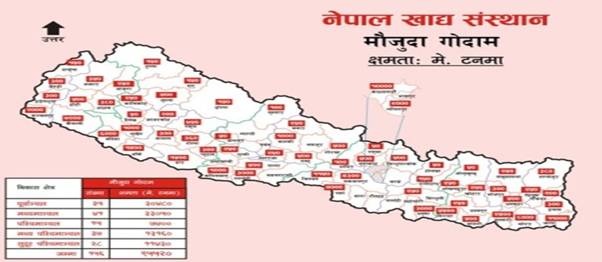|
Warehouse Management in Commodity Exchange
Oxford Advanced Learner's Dictionary defines "warehouse" as "a building where large quantities of goods are stored, especially before they are sent to shops/stores to be sold". Usually, warehouses can be referred to as those commercial buildings which are used for the storage of the goods. And the stored goods may range from any raw materials, packing materials, and spare parts, components to finished goods associated with agriculture, manufacturing, or commerce. For the trading of the agro commodities, warehouses play a significant role but trade value and trade volume reaches a satiable state when the warehouse receipts are used. Investopedia defines the "warehouse receipt" as "a receipt used in futures markets to guarantee the quantity and quality of a particular commodity being stored within an approved facility". Such warehouse receipts can be used to settle the expiring futures contracts and the delivery of the actual commodity does not remain that essential. Like a share certificate carries all the share value with itself, a warehouse receipt carries the value and essentials of the commodity stored in the warehouse. They do not have a limited use; instead they can also be referred to as the vault receipts that can be used to settle futures contracts having the precious metals as their underlying commodities.
As per the Secured Transaction Act 2063 of Nepal, "document" is defined "as a document of a title or a receipt such as a bill of lading or warehouse receipt issued by a person carrying on the business of transporting or storing goods". The current problem with the warehouse receipt is that the term is just mentioned in the act but does not carry much meaning as there is no room for the execution. The same weakness of our lawmakers repeats again: they only identify things but do not give sufficient scope for the implementation. Mentioning about "warehouse receipt" in the act has taken through the forthcoming obligations: on one hand, general people are going through the mere expectation that they are going to be facilitated by the act which basically tends to facilitate the rural level farmers and on the other hand, the lawyers claim that though the act has mentioned about the receipt, it cannot be brought to the execution as there is no method to quantify the receipt. The act does not say anything about what to mention in the warehouse receipt and what are the basic requirements for the making of warehouse receipt.
Warehouse receipts basically intend to function as the certificates verifying the quality, quantity and standard of the commodity they have in the warehouse. The figures later in the article reflect an ideal functioning of the warehouse receipt financing and the pre-requisites that are essential for the establishment of such mechanism. Many sectors of the financial system need to make coordinated efforts for the development and success of the warehouse receipt financing mechanism. For the making of a warehouse receipt, an independent agency is required which will inspect the details of the products stored in the warehouse. And the agency that does the inspection should be nationally and internationally recognized for the job, only then can the general public actually trust its inspection. Other very important institution necessary for the system is an insurance company.

Fig: An Ideal Functioning of Warehouse Receipt Financing Mechanism
An insurance company is required that can evaluate the actual value of the commodities stored in the warehouse, and similarly give the rate the depreciation and other financial mechanisms. It's just that the farmers should be convinced that their product is insured. A reserve fund should be established, which can bear the unwanted loss in the supply chain. Here we talk about the indemnity fund, which should be established to safeguard the losses of farmer and warehouse level. Then the role of the commercial bank is essential that should identify the warehouse receipt, as a legal document either for the deposit or the lending. In the current scenario, the major issue that comes up with the commercial bank is the hypothecation which should actually be addressed by the central bank of the country. And one more thing we should be careful about is that we are talking about the rural level farmers, so this service should be very much accessible to that group of people.
When we talk about the possibilities of warehouse receipt and their financing in Nepal, I see immense opportunity. The figure attached later will give sufficient evidence for the argument above.

We can see in the figure that the warehouse capacity of the government owned Nepal Food Corporation is 95,520 metric tons of the products. Similarly the government owned Agriculture Inputs Company Limited (AICL) has a warehouse capacity of around 66,200 metric tons of the products. Many private sector business houses like Nimbus Group, Dugar Group, Golchha Group also have their warehouses for the storage of the commodities. Therefore, we can have a good idea that we do not lack the warehouses, but just lack the initiation, which is to be made by the government only. Regarding the costs, when we already have warehouses, the investment is only about the standardization and maintenance of the warehouses.
South Africa is a country, which does not have a separate act for the warehouses but still the warehouse, warehouse receipt and the financial system has been running successfully by keeping them under the contract law for now. This reflects the genuine motive of the country towards development and nothing else. Once the government comes up with a good motive and supports it with legal framework, we are in a position that we can give a good market to our production and we can bring back our reputation. We used to be the exporters of many agro commodities few years back but our carelessness have brought us to that situation where we need to import the agro products. Let us work together to get the reputation back!
|